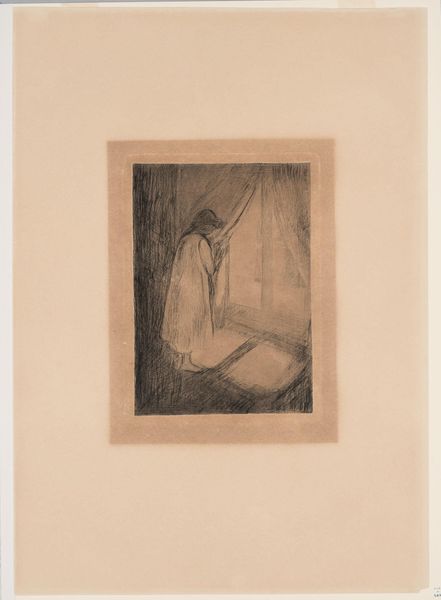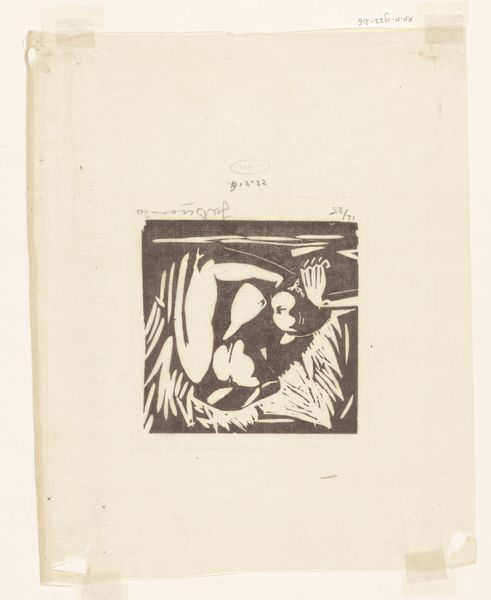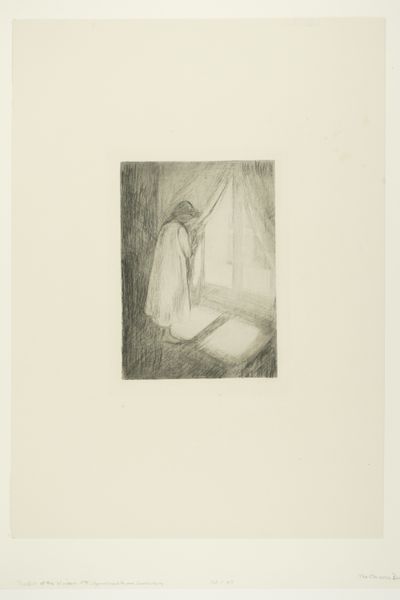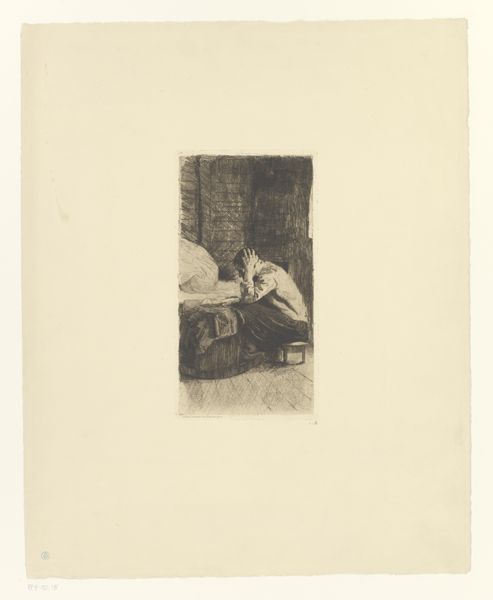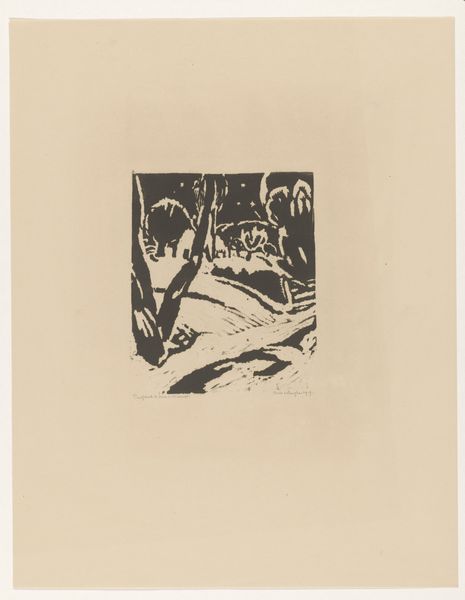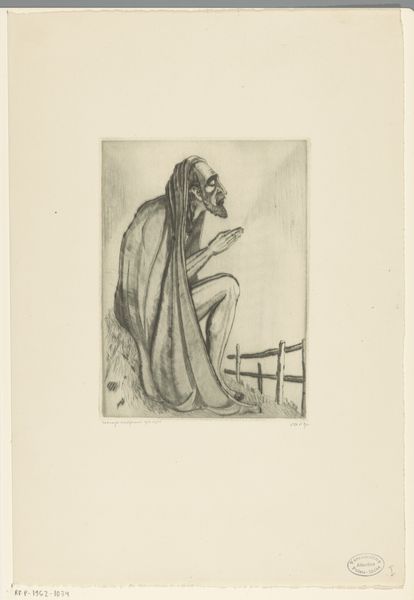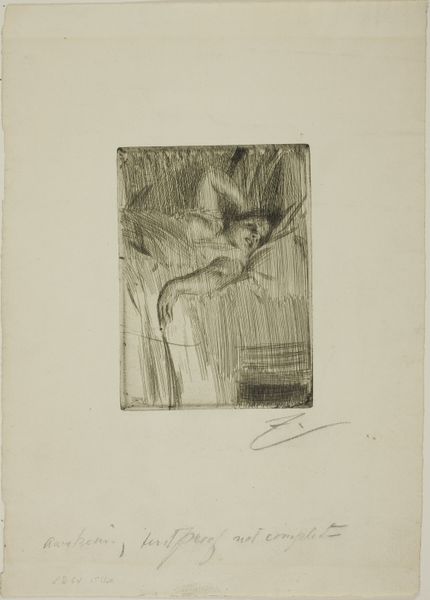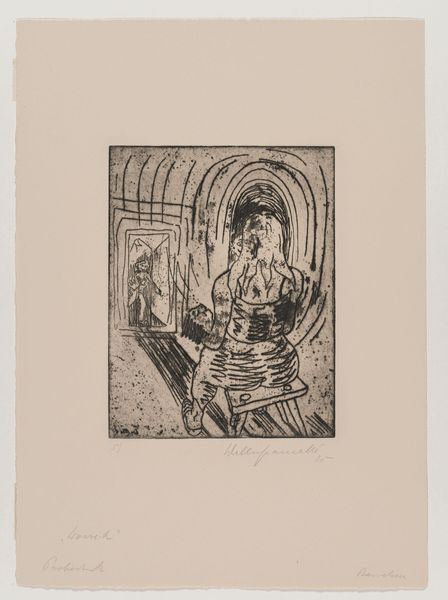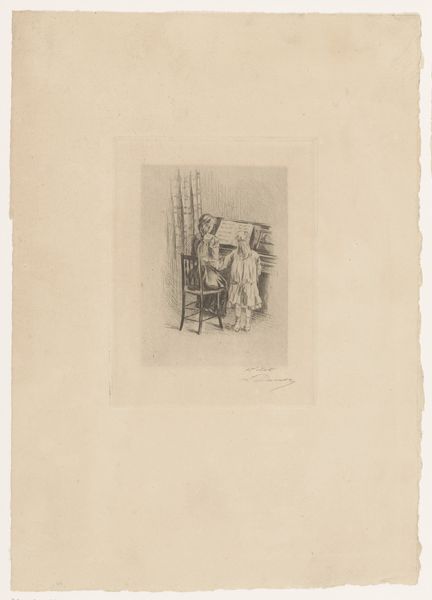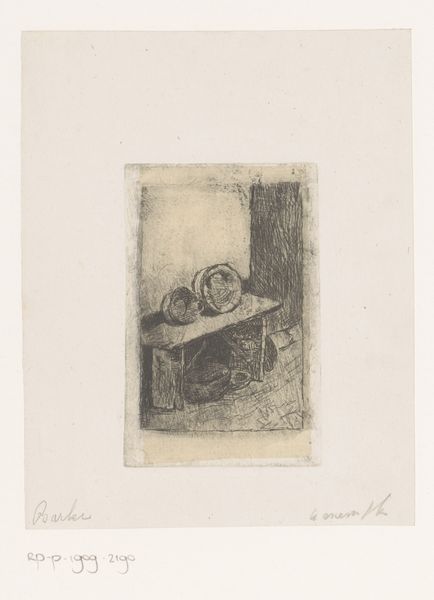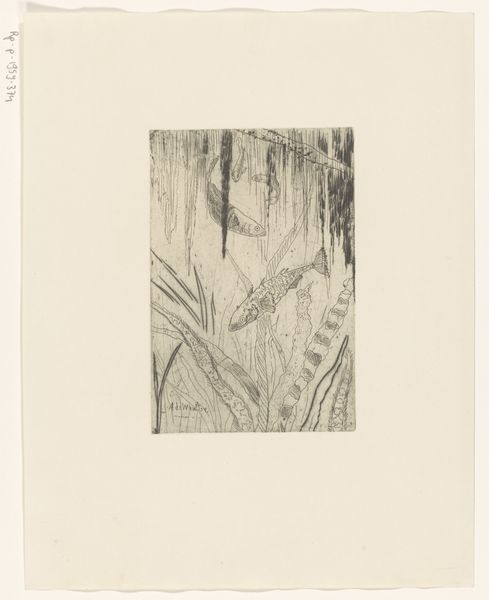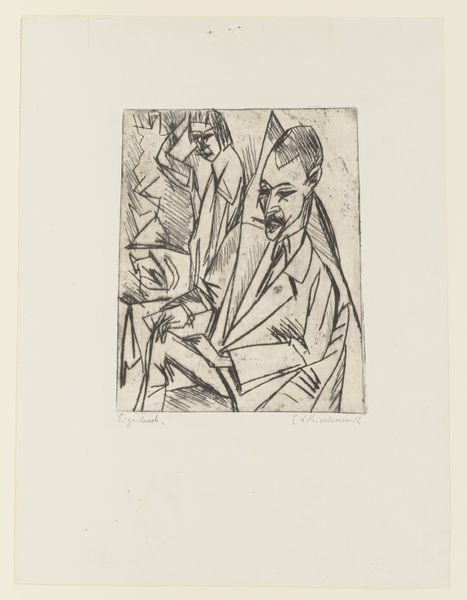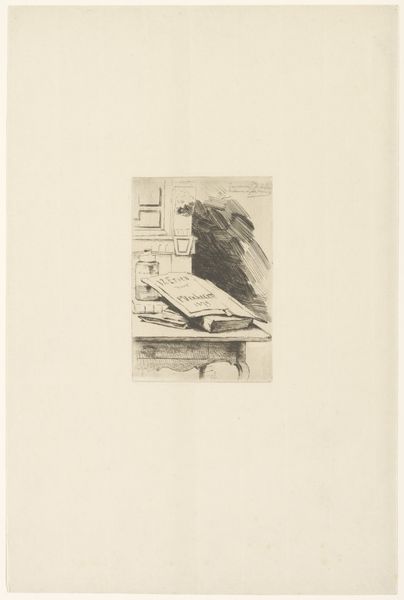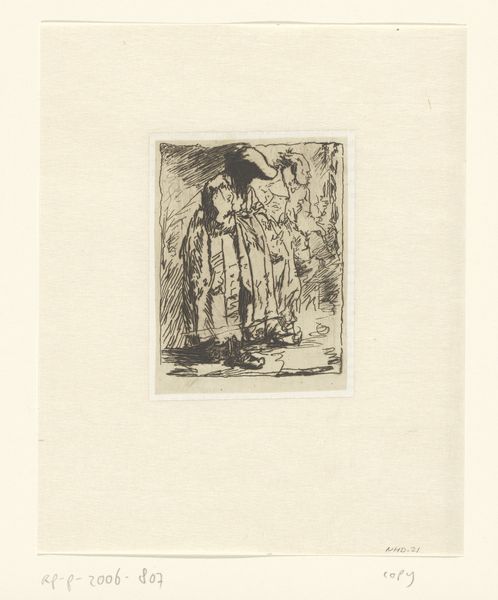
drawing, print, etching, paper
#
portrait
#
drawing
#
linocut
# print
#
etching
#
etching
#
figuration
#
paper
#
linocut print
#
expressionism
#
history-painting
Dimensions: height 99 mm, width 84 mm
Copyright: Rijks Museum: Open Domain
Editor: Here we have “Weeping Woman,” possibly created between 1920 and 1925 by Hein von Essen. It appears to be a print – maybe an etching or linocut – on paper. The raw, expressive lines are immediately striking. What do you see in this piece beyond the obvious display of grief? Curator: What interests me most is the social context embedded in this image. The depiction of female grief was, and to some extent still is, a loaded cultural symbol. In the early 20th century, portrayals of women in distress were often tied to societal anxieties, particularly in the wake of war and shifting gender roles. This piece is dated anywhere from 1920-1925, so WWI would have been at the forefront of societal angst. What do you think the artist is attempting to communicate through this lens? Editor: Perhaps it's commenting on the emotional toll war takes on everyone, particularly women who are often left to grieve in its aftermath. The veiled figure could be a widow. Curator: Precisely. The act of veiling is a very interesting clue. Does this veil symbolize a literal hiding of emotions, or could it be alluding to the public performance of grief expected of women at the time? What impact would placing the figure in that context have? Editor: It adds another layer to the emotion. It is no longer simply grief, but grief mediated by social expectations and perhaps, limitations. It shows grief, yet simultaneously conceals it. The figure almost fades. Curator: The stark lines contribute to that sense of suppressed anguish. The image's power resides in how it reflects the tensions between personal pain and public representation. What do you make of that now? Editor: It's fascinating how a single image can reveal so much about the complexities of history and social expectation. It really shows us what the public role of art could be, reflecting sociopolitical discourse within something so seemingly simple as an expressionist etching. Curator: Indeed. Art as a mirror reflecting not only our emotions, but our societies too.
Comments
No comments
Be the first to comment and join the conversation on the ultimate creative platform.
